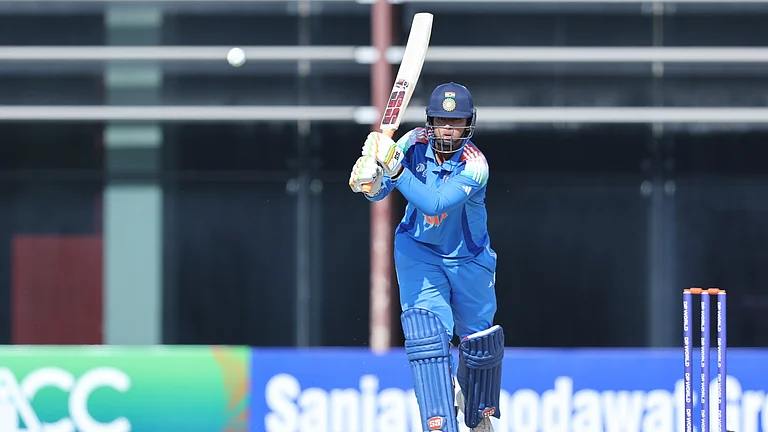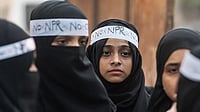For an increasing number of couples in India, having a child is no longer as alluring as it once used to be. With “career first” becoming the new norm for young and middle-aged couples, the status of motherhood has seen a drastic fall across India. The recently released Census Report (2016) on the fertility status of India indicates declining fertility among Indian women, with an alarming decline of 31 per cent recorded for the period 1991 to 2016.
More and more women in India are failing to conceive naturally and need assisted reproductive methods to bear children, say medical practitioners. The rural-urban differential has also narrowed down, indicates the census. Birth rates have declined in Andhra Pradesh, Delhi, Himachal Pradesh, Jammu & Kashmir, Karnataka, Kerala, Maharashtra, Odisha, Punjab, Tamil Nadu, West Bengal, Uttarakhand and Telangana. While Bihar has the highest birth rate among rural areas in the country, Uttar Pradesh holds the title for urban areas. The lowest birth rate has been recorded in rural areas of Kerala and urban areas of Himachal Pradesh.
Interestingly, the decline in fertility rates is more in rural areas across India, except in the age group of 20-24 years. During the last decade, fertility declined in the older age groups (above 24 years) in rural areas, but rose in the same age group in urban areas. There has also been a decline in marital fertility in women aged 30 years and above, both in rural and urban areas.
Demographers are surprised that even in states like West Bengal and Telangana, which have high rates of early marriages, there is a sharp decline in fertility rates among women.
Though education and environment are important factors governing the fertility indicator, doctors opine that reasons vary for urban and rural areas across the country.
In recent decades, medical practitioners in rural areas have seen an alarming increase in tubal infections in women of varying age groups. The lack of access to potable water and the ensuing unhygienic conditions, particularly during menstruation, has led to tubal infections among rural women. In urban women, fast-paced lifestyle, excessive stress and obesity are some of the main contributing factors to infertility.
A number of gynaecologists Outlook spoke to, unanimously agreed that excessive use of oral contraceptive pills to delay getting pregnant is also an important contributor to infertility among women. “It is not just women who are infertile. The sperm count is also decreasing in men. We are seeing many abnormalities in ova and sperms,” says Dr Ashok Anand, head, department of gynaecology and obstetrics, Sir J.J. Group of Hospitals. “Our hospital gets patients from both urban and rural populations across all income groups. We are now seeing a leap in infertile women from rural areas. This was not so common earlier. In case of tubal infections, by the time patients reach a hospital for treatment, a lot of damage has occurred to their health. There is also a huge leap in the number of women who suffer from PCODs (polycystic ovarian disorders). This is seen both in rural and urban women. We are seeing it in young girls too,” Dr Anand tells Outlook.
Dr Pradeep Chitre, a Thane-based IVF specialist, agrees about the surge in PCOD cases. According to him, late marriages, delayed motherhood, hormonal imbalances, obesity, hypothyroidism and lifestyle stress are among reasons for the declining fertility in women. “Many of my patients tell me they do not have regular post-marital conjugal relationships. Many of the couples do not even share a bedroom. Couples are busy with their careers and both men and women are not keen on having children. The number of couples seeking IVF-assisted pregnancies is also high, despite it being an expensive method of reproduction,” says Dr Chitre.
In Dr Chitre’s experience, a number of career-oriented women are freezing their eggs for future use. “This way, they can use it when they want. The success rate of the frozen embryo transfer (FET) cycle is 60 per cent, whereas in case of a fresh embryo, the success rate is only about 30-35 per cent. As we see it, the likelihood of there being more infertile women and couples is a huge reality,” says Dr Chitre.
In the last decade, due to increase in infertile couples, assisted reproductive facilities are becoming available even in smaller cities, making IVF treatments more accessible. According to Dr Anand, infertility is about 30 per cent each in males and females, and 30 per cent among couples. According to statistics from an IVF clinic, about 2.5-3 lakh IVF cycles are done every year in India.
Relationship counsellor Dr Rajan Bhonsle, who runs the Heart to Heart Counselling Centre in Byculla, Central Mumbai, says motherhood does not appeal to an increasing number of Indian women. “They want to achieve more than just motherhood. They want to settle down before motherhood. Post the Covid-19 pandemic, many couples do not want to have children. Nowadays, becoming a mother is a matter of great bother for a woman. Now the child is not a product of romance, it is planned to the last detail,” says Dr Rajan.
The census also indicates that states in India with high literacy among women are seeing a high rate of infertility in them. According to the National Sample Survey Office report, the top five states with high literacy among women include Kerala, Delhi, Uttarkhand, Himachal Pradesh and Assam. These are also states with high incidence of infertility in women. Conversely, Rajasthan and Bihar, the states with highest female illiteracy, have more fertile women, shows the census.
“Women are no longer companion pieces to the journeys and dreams of men,” says Dr Aman Bhonsle, author of Sex Wraps, Sex Craps. He says women have more access to relationships, and dating is a much more acceptable lifestyle for both women and men. “Couples have very little bandwith for each other. Their professional stress is very high. They need to sustain a certain lifestyle, so they postpone motherhood,” says Dr Aman.
Diabetes, a lifestyle disease which has seen an unbridled rise in both men and women, is also counted as an important factor causing infertility in both women and men. “Diabetes makes it very difficult to implant the fertile egg into the uterus. Diabetic women suffer miscarriages. Therefore, infertility is high in all groups of diabetic women,” says Dr Anand.
All in all, the infertility census may not look like good news for families, but when it comes to India’s burgeoning population, the reclaiming of reproductive rights by women is a positive step to reducing population.
(This appeared in the print edition as "Unborn Pandemic")
ALSO READ


























